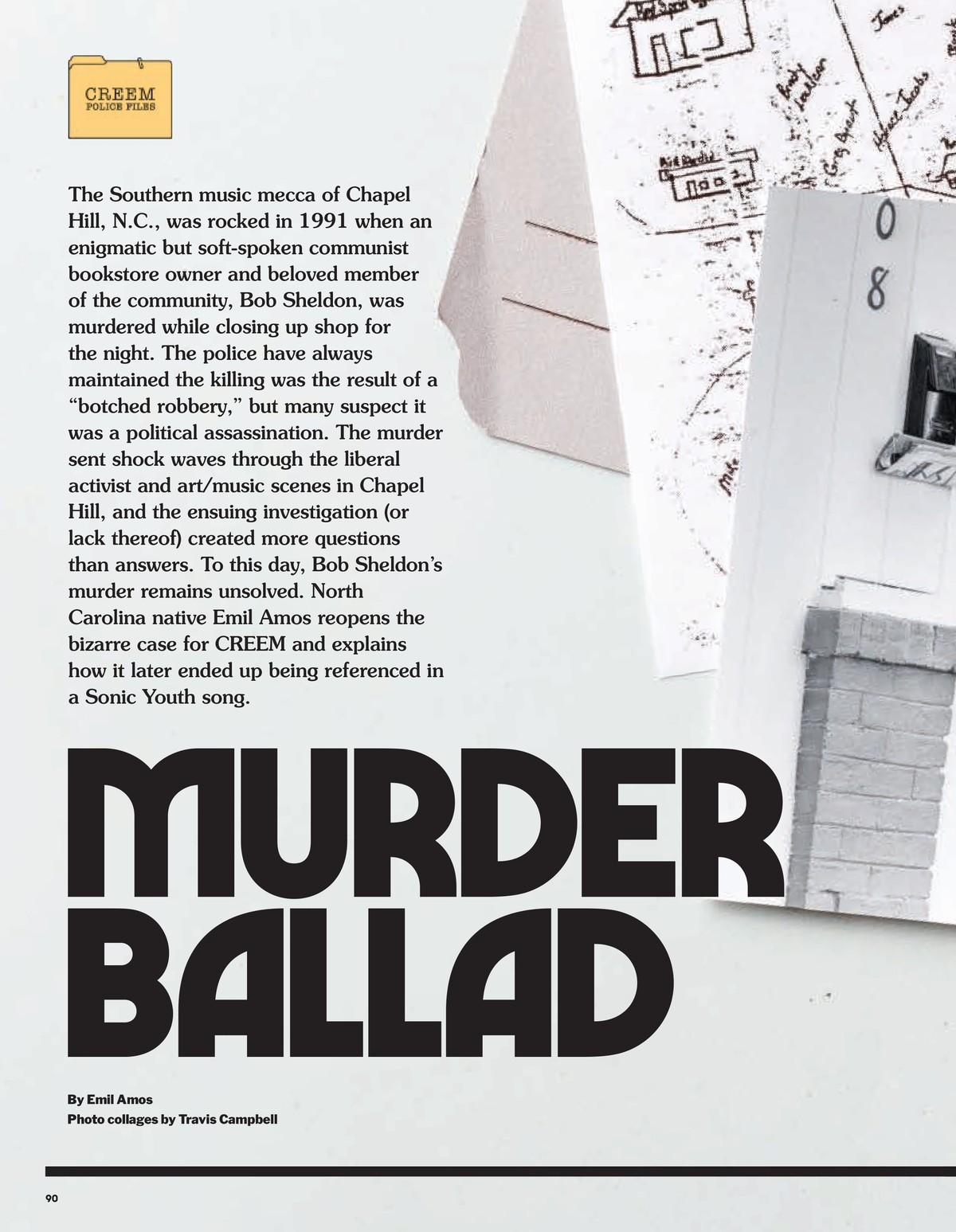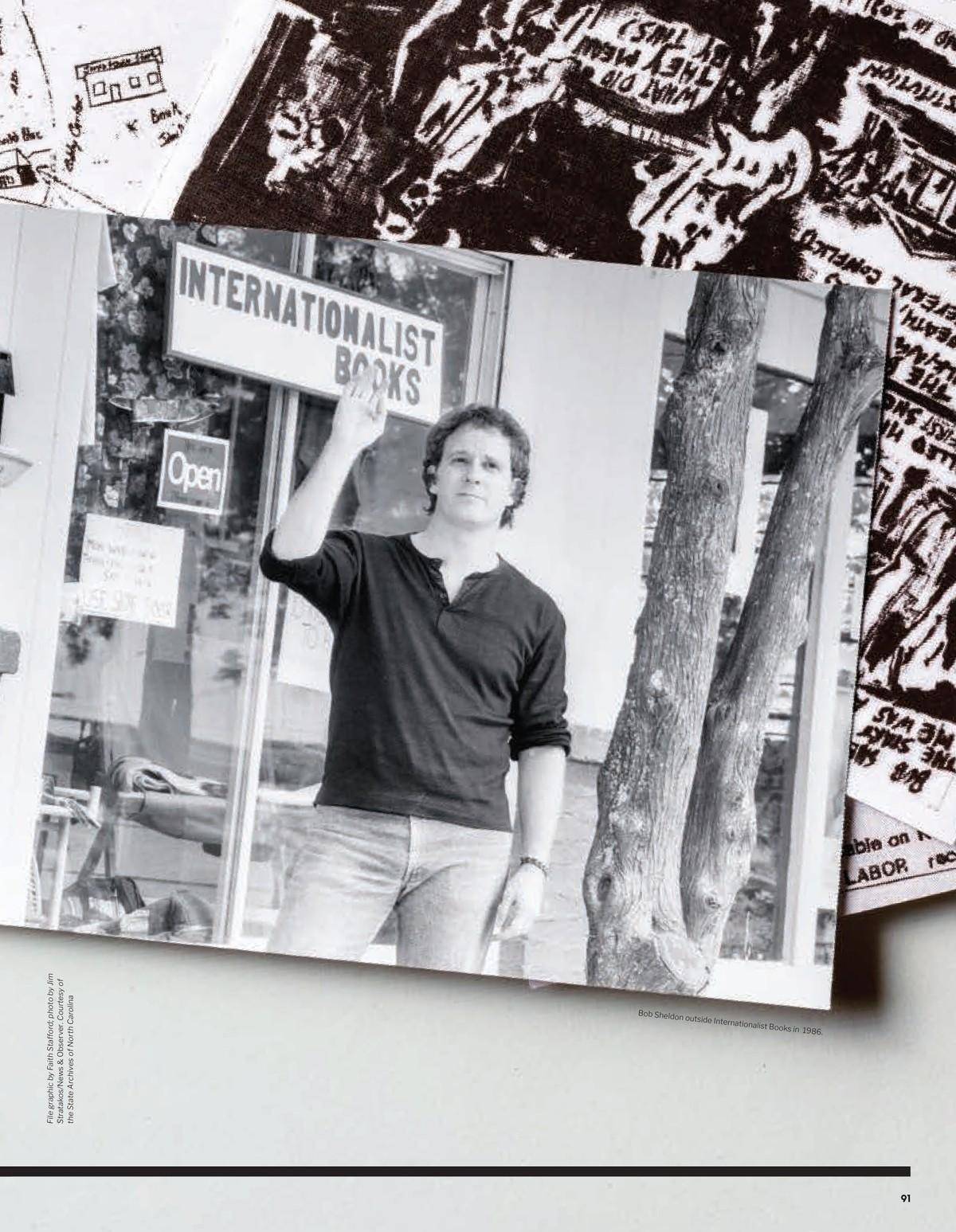Police Files
MURDER BALLAD
A Southern music mecca, a Sonic Youth shout-out, and the killing of communist bookstore owner Bob Sheldon.


The Southern music mecca of Chapel Hill, N.C., was rocked in 1991 when an enigmatic but soft-spoken communist bookstore owner and beloved member of the community, Bob Sheldon, was murdered while closing up shop for the night. The police have always maintained the killing was the result of a “botched robbery,” but many suspect it was a political assassination. The murder sent shock waves through the liberal activist and art/music scenes in Chapel Hill, and the ensuing investigation (or lack thereof) created more questions than answers. To this day, Bob Sheldon’s murder remains unsolved. North Carolina native Emil Amos reopens the bizarre case for CREEM and explains how it later ended up being referenced in a Sonic Youth song.

